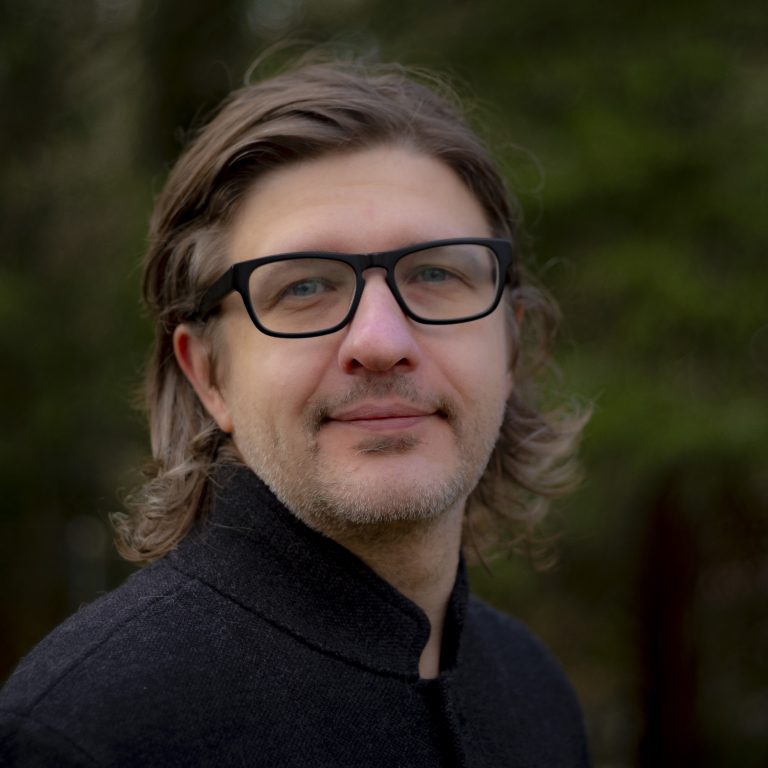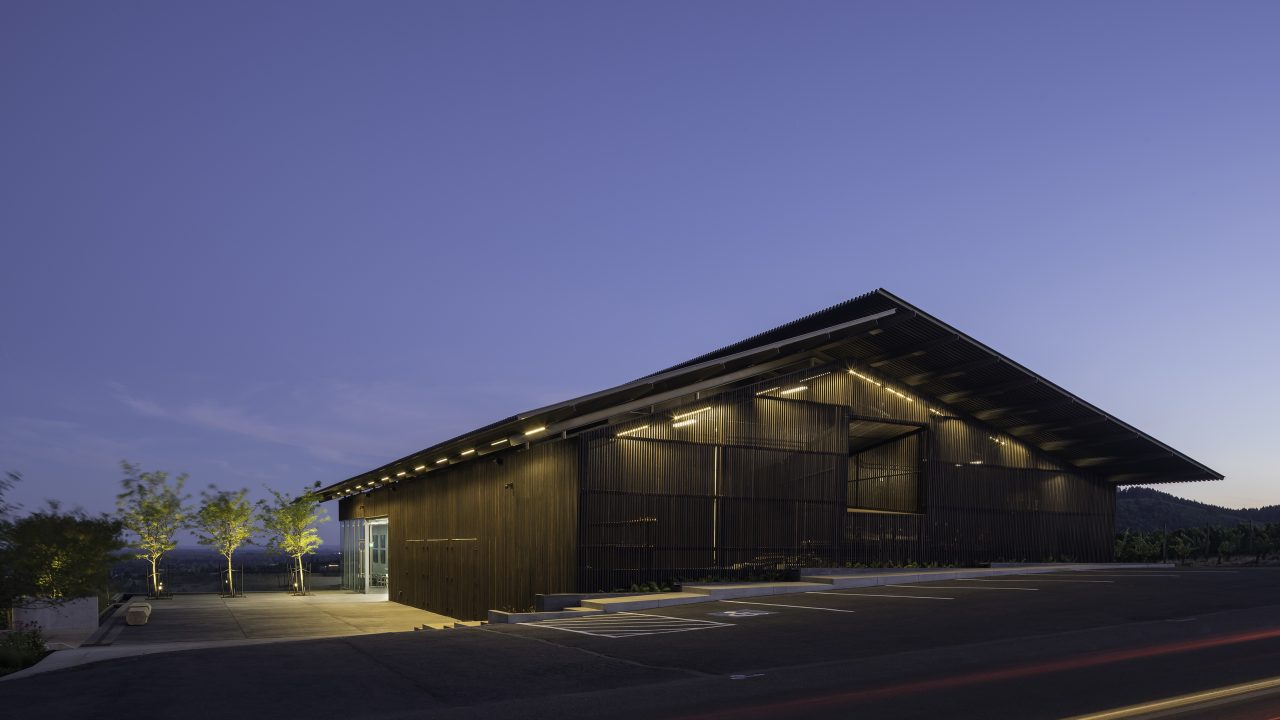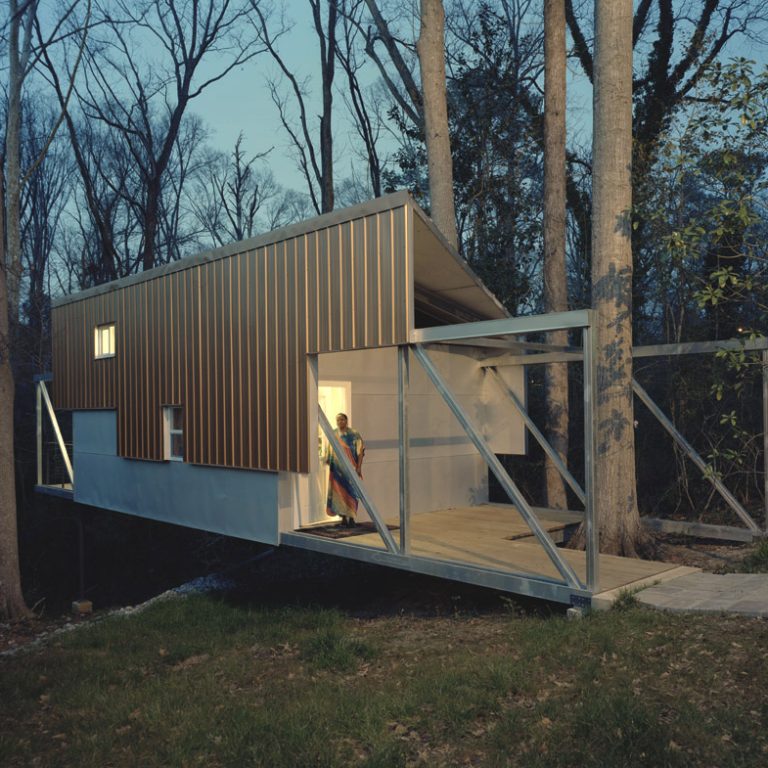APLA Alum Taking Scenic Route in Architectural Storytelling
Rand Pinson ’08 has a strong interest in the narrative power of architecture—a perspective that extends to his own career.

As co-founder of the Portland-based architecture office Pine Bureau, he has explored the intersection of design and storytelling through his work. Now, as the Architecture Foundation of Oregon’s 2025 Van Evera Bailey Fellow, he will apply that same lens to the Ice Age National Geologic Floods Trail, assessing opportunities for improvement and deeper engagement with the landscape.
“While designing a winery, I was looking at an area known for its agriculture, and my research led to the Missoula floods—glacial Ice Age floods that washed a lot of the topsoil, starting with Eastern Washington,” said Pinson, who earned his Bachelor of Architecture from Auburn’s School of Architecture, Planning and Landscape Architecture (APLA). “That history is part of why the region is agriculturally friendly. Through a Master Naturalist Program—similar to a master gardener certification but with an ecological focus—I spent more time in the Columbia River Gorge. There I came across the Ice Age National Geologic Floods Trail, a little-known national park that fascinates me.”
Pinson’s yearlong fellowship begins with developing a vision as a designer and drawing insights from other valuable precedents.
“I’m speaking with geologists from the gorge and gathering input from the community,” he said. “I also saw Norway’s scenic route system as a compelling model. Interestingly, Norway’s scenic routes were inspired by U.S. scenic highways.”
As part of his research, Pinson will travel to Norway for about a month, traveling the route to draw inspiration from various elements such as bridges, lookouts, rests stops and parking areas.
“It’s a great way to integrate architecture and design into scenic settings,” he said. “I’m interested in the idea of storytelling in architecture, and this project presents an opportunity to shape a larger narrative that impacts the area. While in Norway, I’ll develop documentation, drawings and models, with the hope of one day bringing those ideas to life.”
One of the key challenges of the Ice Age Floods Trail, he noted, is its lack of visibility and cohesive infrastructure.
“The exciting part of this project is finding the interesting ways history, ecology and architecture intersect,” he shared. “How can we take advantage of the site’s natural beauty, promote it and expand its potential? The trail already features remarkable elements, such as Maya Lin’s land art pieces that integrate seamlessly into nature. What it needs is a unifying vision to tie everything together. My goal is to contribute to growing tourism for this interesting beautiful national park.”

A Natural Roadmap
Pinson’s appreciation for designing within natural landscapes dates back to his early career. From 2010–2015, he served as a project designer and architect at San Antonio-based Lake|Flato Architects. “Lake|Flato was a master class for me, especially now that I am working on projects in Montana with conservation overlays,” he said. “It reinforced the importance of integrating architecture into the land and the broader natural environment in a way that tells a cohesive story.”
Foundations at Auburn
His journey into architecture’s relationship with the environment began even earlier at Auburn, particularly through APLA’s Rural Studio.
“Rural Studio gave me confidence and ambition,” he stated. “When you work on projects with tight budgets and constraints, you develop problem-solving skills that apply to large-scale firms with bigger budgets. During the recession, I moved between different roles, but everywhere I went, people had heard of Rural Studio. It truly opened doors.”

Among his most significant projects was The Bridge House, part of Rural Studio’s early housing affordability work. As part of the design-build team, he researched light-gauge metal framing and prefabricated truss construction that would be a part of the home.
“It was a challenging but exciting thesis project,” he said. “All thesis teams contributed to the model, working within a budget. What I took away, along with the excitement of being a part of the project, was confidence and the ambition to create meaningful architecture.”
Pinson’s time at Auburn was also shaped by instructors who made an impact, including Marlon Blackwell, now E. Fay Jones Chair of Architecture at the University of Arkansas, and Rusty Smith, Rural Studio’s Associate Director.
Inspired by the mentorship he received, he is now committed to supporting the next generation of architects and serves on APLA’s Architecture Advisory Council, where he helps bridge the gap between academia and industry. The council provides faculty with insights and support from industry professionals, offering program recommendations, connecting Auburn to regional networks and advocating for the program within the broader profession.
As Pinson embarks on his fellowship journey in 2025, he remains excited about the possibilities ahead—for both his firm and the future of the Ice Age Floods Trail.
“The natural world is just filled with possibilities, and it calls to me,” he shared. “Every project can be an adventure, and I enjoy the creative challenges that can come with them.”
See more in:
Alumni,
Alumni Recognition,
Industry Recognition
Related people:
Rusty Smith